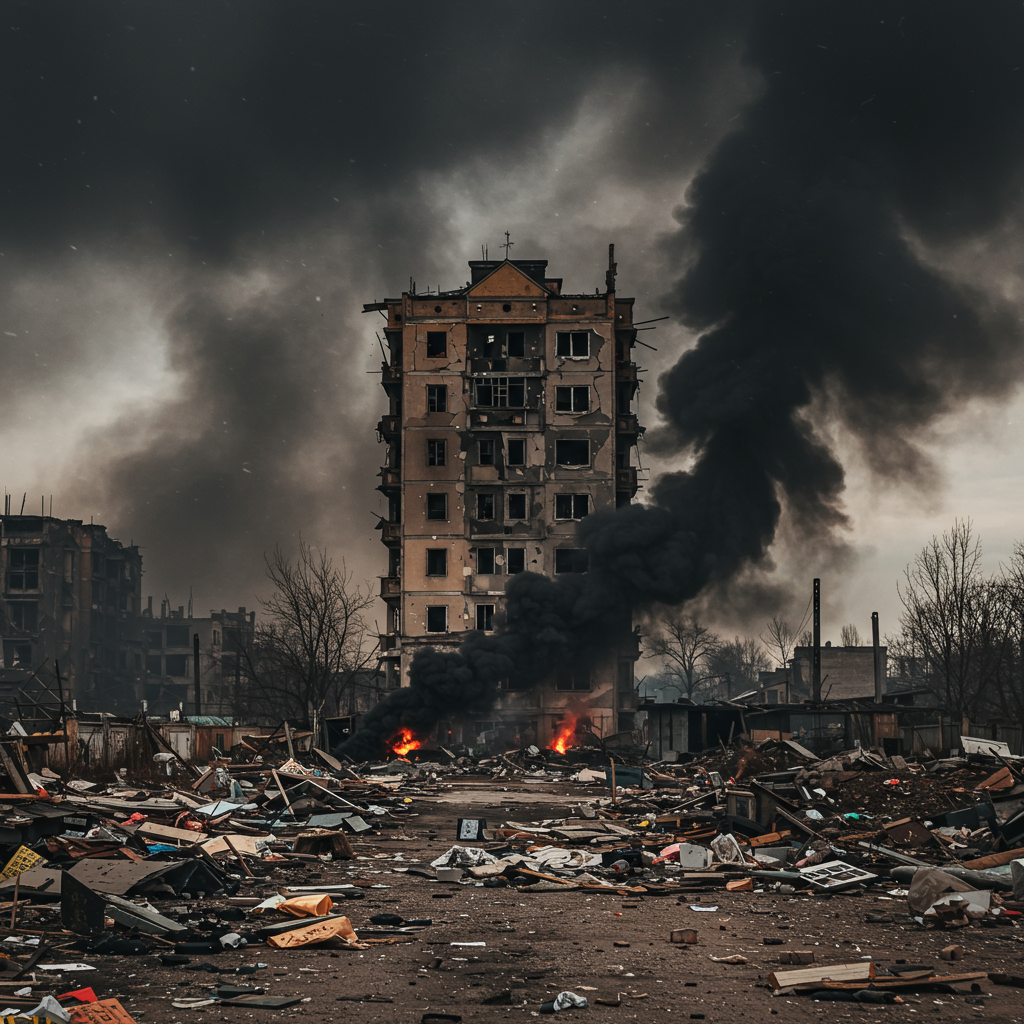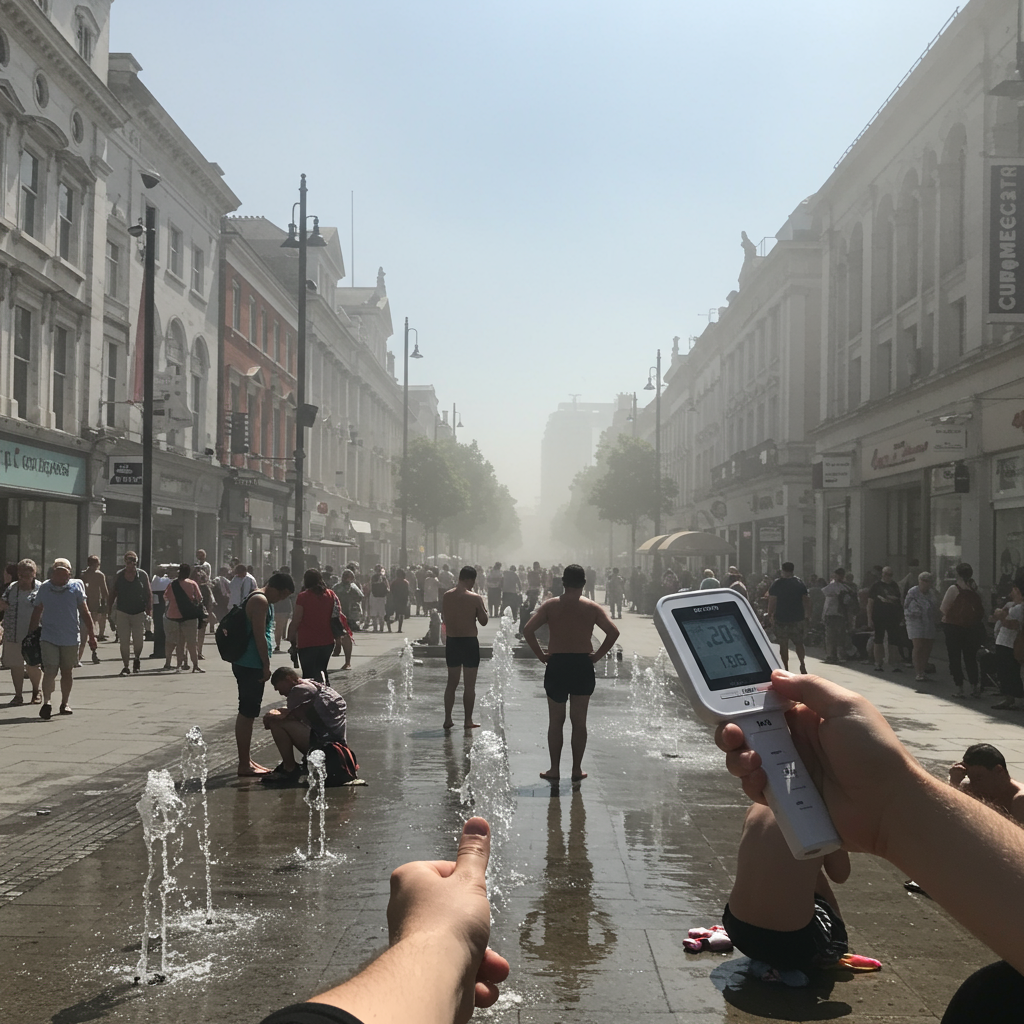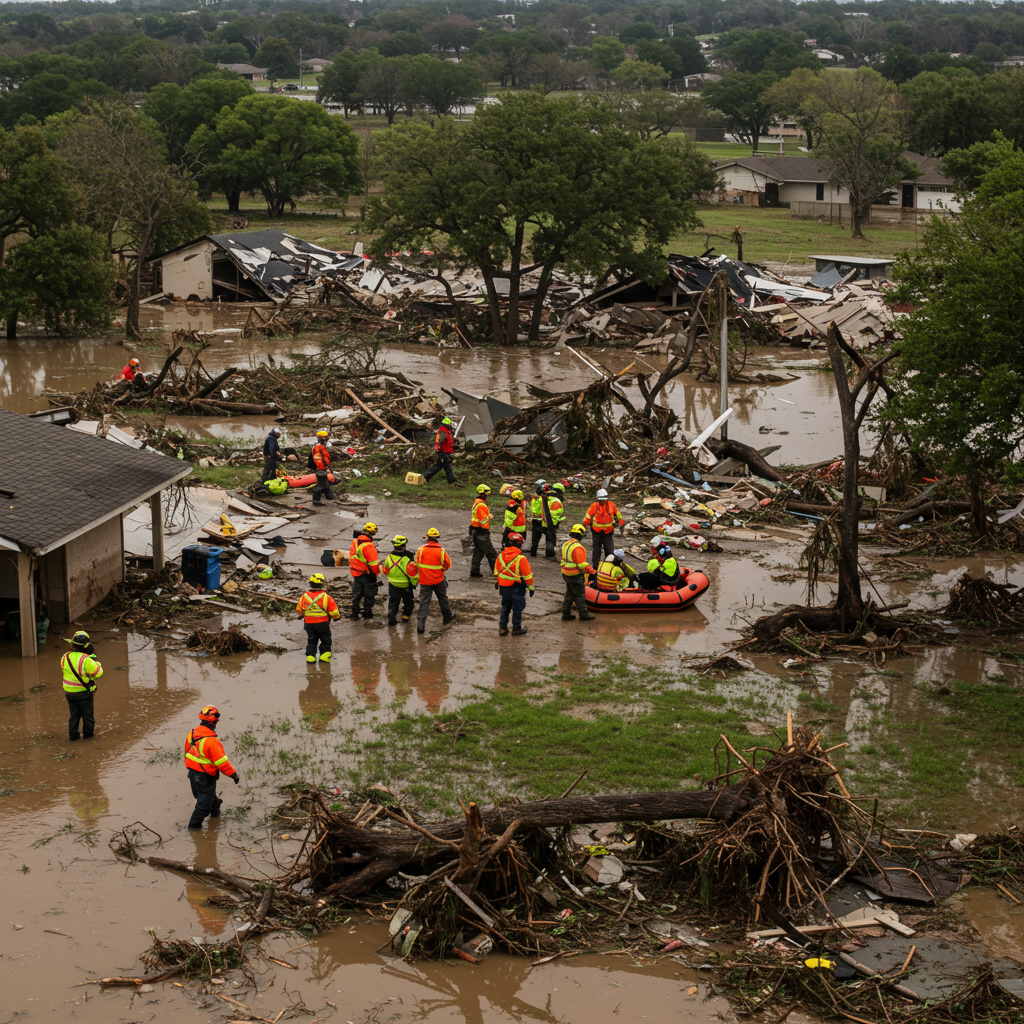Kyiv endured its most devastating aerial bombardment since the full-scale conflict began, a massive Russian drone assault on early Friday that claimed one life and injured at least two dozen others. The hours-long attack, involving hundreds of drones and missiles, inflicted widespread damage across the capital, unfolding just hours after former U.S. President Donald Trump spoke with Russian President Vladimir Putin. This unprecedented onslaught immediately drew sharp reactions and highlighted ukraine’s urgent need for enhanced air defenses amidst recent shifts in U.S. military aid.
The sheer scale and timing of the assault underscored the brutal reality of Russia’s intensified air campaign. Emergency services and residents described a harrowing night under relentless fire. The attack struck crucial infrastructure and residential areas, leaving a visible mark of destruction across multiple districts.
Unprecedented Aerial Barrage on Kyiv
The nighttime assault, described by Ukrainian officials as the most significant drone attack since the 2022 invasion began, unleashed a relentless barrage from early evening until dawn. Ukraine’s Air Force reported a total of 539 drones and 11 missiles were launched nationwide, with Kyiv bearing the brunt of this massive strike wave.
For over seven hours, air raid sirens screamed across the capital, a grim soundtrack to the buzzing whine of incoming Shahed-type kamikaze drones and the booming detonations of interceptions and impacts. Residents sought refuge in underground metro stations and basements as explosions echoed across the city. Acrid smoke hung over the city center in the aftermath.
Casualties and Widespread Damage
The human toll of the attack included at least one fatality and between 23 and 26 injured, among them a child. Kyiv Mayor Vitali Klitschko reported that 14 individuals were hospitalized in the capital alone. First responders worked through the night and into the morning to rescue trapped residents and extinguish fires.
Damage was extensive and indiscriminate, affecting vital infrastructure and civilian structures alike. Reports indicated approximately 40 apartment buildings sustained damage, alongside passenger train infrastructure. Five schools and kindergartens were hit, as were numerous cafes and cars. Damage was observed on both sides of the Dnipro River. Falling drone debris caused a fire at a medical facility. The consular section of Poland’s embassy in central Kyiv was also damaged, though staff were unharmed. Ukraine’s state-owned railway had to divert several passenger trains, leading to delays across the network.
Timing Coincides with Diplomatic Calls
The timing of the devastating strikes immediately became a focal point, occurring just hours after a phone conversation between U.S. President Donald Trump and Russian President Vladimir Putin. Ukrainian President Volodymyr Zelenskiy explicitly noted this proximity, stating that the first air raid alerts coincided closely with news reports discussing the Trump-Putin conversation that took place earlier on Thursday. He characterized the attack as “deliberately massive and cynical,” interpreting it as clear evidence that Russia has no intention of halting its war and terror campaign.
Following his call with the Russian leader on Thursday, Mr. Trump stated he was “very disappointed” with the conversation and made “no progress at all” on efforts to end the war. He added that he did not believe President Putin was “looking to stop” the conflict, expressing that he was “not happy” about the ongoing hostilities.
Meanwhile, the Kremlin maintained that Moscow remained committed to achieving its objectives in Ukraine and addressing the conflict’s “root causes,” as conveyed by Putin’s foreign affairs adviser, Yuri Ushakov.
Zelenskiy Discusses Air defense with Trump
Later on Friday, President Zelenskiy held a “very important and productive” discussion with Mr. Trump, focusing heavily on countering the escalating Russian aerial attacks. The leaders reportedly agreed to work towards bolstering Ukraine’s ability to “defend the sky,” discussing avenues for joint defense manufacturing, purchases, and investments. Ukraine has repeatedly requested additional Patriot missile systems from the U.S., which it deems crucial for intercepting sophisticated ballistic missiles like those Russia uses.
President Zelenskiy also issued a strong call for increased international pressure on Moscow following the attack. He argued that for every strike against civilians and human life, Russia should face corresponding sanctions, economic blows, and impacts on their infrastructure and revenues. This reinforces Ukraine’s consistent plea for stronger measures against the aggressor nation.
Context: US Military Aid Pause
This renewed focus on air defense comes amidst recent controversy surrounding U.S. military assistance to Ukraine. Earlier in the week, reports emerged that the U.S. had paused certain shipments of crucial military aid, including items like 155mm artillery rounds, Patriot air defense systems, and various missiles (GMLRS, Stinger, AIM-7, Hellfire).
This decision, attributed by Pentagon officials to concerns about U.S. stockpile levels and a need to prioritize “America’s interests first” following a global military support review, sparked significant concern in Kyiv. Ukrainian officials had warned that such a halt would weaken their ability to defend against intensified airstrikes and battlefield advances.
The halt drew sharp criticism from members of both Republican and Democratic parties in the U.S. Congress, with some questioning the decision-making process and arguing that supporting Ukraine’s defense aligns with U.S. national security interests. Ukraine reportedly summoned the acting U.S. envoy to express its concerns and confusion regarding the pause, particularly its impact on Patriot deliveries. Amidst this uncertainty, Germany is also exploring options, reportedly in talks to buy Patriot systems to help bridge any potential gap in Ukraine’s air defenses.
Broader War Picture
The extensive Kyiv bombardment reflects a recent intensification of Russian long-range attacks across Ukraine, coinciding with renewed efforts by Russia to advance along the roughly 620-mile front line. Russia has significantly increased its use of aerial weapons in recent months, launching a record 5,438 drones and over 330 missiles in June alone, according to AP data.
While both Moscow and Kyiv deny intentionally targeting civilian areas in the conflict, the war launched in February 2022 has resulted in thousands of civilian deaths, the vast majority Ukrainian. Many more soldiers are believed to have been killed on the front lines, though neither side releases official military casualty figures.
Attacks on this night weren’t limited to the capital. Ukraine’s Air Force stated that strikes occurred in eight locations across the country, involving 9 missiles and 63 drones. Regions including Dnipropetrovsk, Sumy, Kharkiv, and Chernihiv also sustained damage. Ukrainian air defenses claimed to have shot down 478 of the incoming air weapons. Russia’s Defense Ministry claimed its targets were factories producing drones and military equipment in Kyiv, as well as a military airfield and an oil refinery, stating it used high-precision weapons – a claim Ukraine did not detail or confirm regarding militarily valuable targets. Separately, on Thursday, Russian shelling reportedly killed five people in eastern Ukraine near the city of Pokrovsk. Reports also indicated a Ukrainian drone targeted a power substation near Moscow on Friday, injuring two people.
Frequently Asked Questions
What was the scale of the massive Russian drone attack on Kyiv?
The attack on Kyiv early Friday, July 4, 2025, was described by Ukrainian officials as the largest drone assault since the start of the full-scale invasion. Ukraine reported Russia launched a total of 539 drones and 11 missiles nationwide, with Kyiv being the primary target. The barrage lasted over seven hours, leading to continuous air raid sirens and explosions across nearly every district of the capital.
How did the timing of the Kyiv attack relate to the Trump-Putin call?
The extensive drone attack on Kyiv occurred just hours after former U.S. President Donald Trump spoke by phone with Russian President Vladimir Putin. Ukrainian President Volodymyr Zelenskiy explicitly noted that the initial air raid alerts in Kyiv began “almost simultaneously” with media reports discussing the Trump-Putin conversation. He interpreted this timing as a deliberate and cynical signal of Russia’s intent to continue the war.
Why is US military aid, like Patriot missiles, crucial for Ukraine’s air defense?
Patriot missile systems are considered crucial for Ukraine’s air defense because they are effective at intercepting ballistic missiles, which Russia frequently uses to target Ukrainian cities and infrastructure. The U.S. recently pausing shipments of certain military aid, reportedly including Patriot components and other crucial items like artillery shells, weakens Ukraine’s ability to defend itself against intensifying Russian airstrikes and bolsters Ukraine’s requests for more such systems.
The unprecedented scale of Friday’s drone attack on Kyiv underscored the brutal reality of Russia’s intensified campaign against Ukrainian cities. It also starkly highlighted Ukraine’s reliance on effective air defense systems and the critical need for continued and timely international military assistance. The complex interplay of diplomatic efforts, shifts in aid policy, and relentless military aggression from Moscow underscores the multifaceted challenges facing Ukraine. As Kyiv continues to defend itself against daily bombardments, the focus remains squarely on bolstering its defenses and maintaining international pressure on Russia.
Word Count Check: 1084




